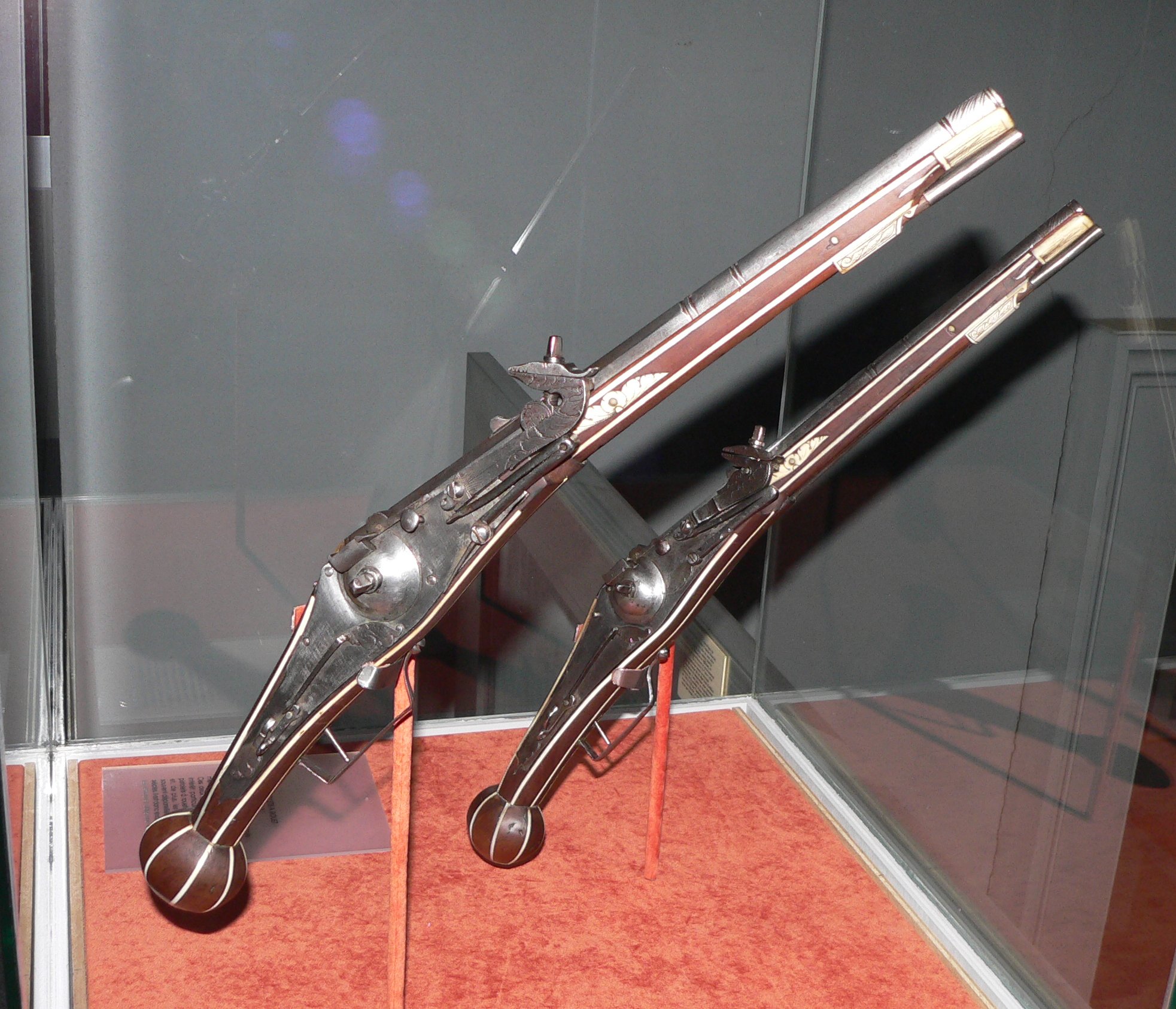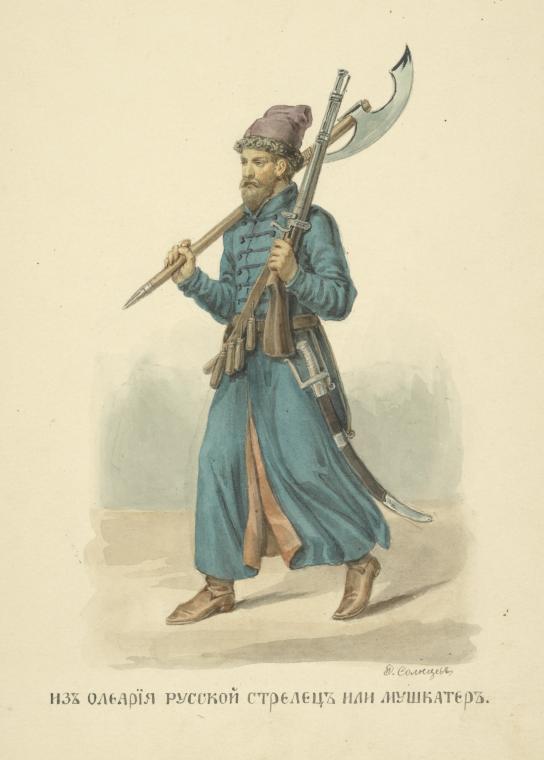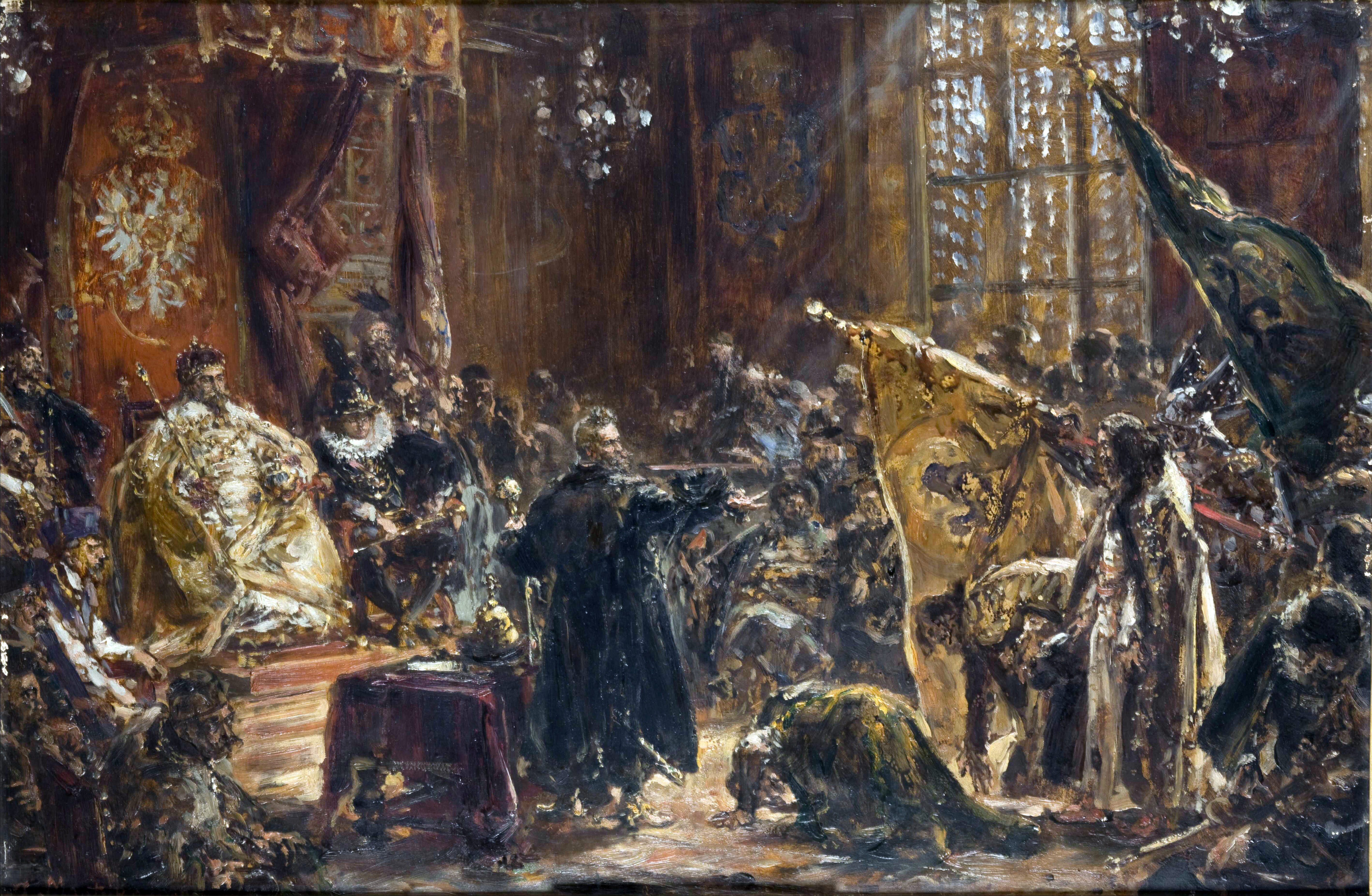|
Siege Of Tikhvin
The siege of Tikhvin was a part of the Ingrian War and the Time of Troubles. Prelude After the Battle of Klushino, Swedish troops, who had been summoned to Russia in 1609 by Vasily Shuisky, declared war on Russia and in 1611 occupied Novgorod and Tikhvin. On June 4, 1613, local Streltsy , image = 01 106 Book illustrations of Historical description of the clothes and weapons of Russian troops.jpg , image_size = , alt = , caption = , dates = 1550–1720 , disbanded = , country = Tsardom of Russia , allegiance = Streltsy D ... and noblemen rose up against the Swedish garrison and destroyed it. Upon learning of this, the Swedes undertook a punitive expedition to Tikhvin and burned the town, but could not take the Assumption Monastery. Siege of the Tikhvin Monastery Tikhvin was approached by a detachment of Russian troops, headed by Prince Semyon Prozorovsky. Meanwhile, the Swedes assembled a 5,000-strong army, which included German infantry, Finnish Reiters, 2,0 ... [...More Info...] [...Related Items...] OR: [Wikipedia] [Google] [Baidu] |
Tikhvin
Tikhvin (russian: Ти́хвин; Veps: ) is a town and the administrative center of Tikhvinsky District in Leningrad Oblast, Russia, located on both banks of the Tikhvinka River in the east of the oblast, east of St. Petersburg. Tikhvin is also an industrial and cultural center of the district, as well as its transportation hub. Population: It was previously known as ''Predtechensky pogost'', ''Tikhvinsky posad''. Etymology Per to one version (Max Vasmer was a supporter of it) the name of the town originates from Old East Slavic ''тихъ'' (russian: тихий), which means «quiet».Фасмер М. Этимологический словарь русского языка. vol. IV. p. 63. Per another version, from Finnish ''tihkua'' — «trickle out».Поспелов Е. М. Географические названия мира: Топонимический словарь: Ок. 5000 единиц. Moscow, 1998 History It was first mentioned in 1383 as Predtechen ... [...More Info...] [...Related Items...] OR: [Wikipedia] [Google] [Baidu] |
Veliky Novgorod
Veliky Novgorod ( rus, links=no, Великий Новгород, t=Great Newtown, p=vʲɪˈlʲikʲɪj ˈnovɡərət), also known as just Novgorod (), is the largest city and administrative centre of Novgorod Oblast, Russia. It is one of the oldest cities in Russia, being first mentioned in the 9th century. The city lies along the Volkhov River just downstream from its outflow from Lake Ilmen and is situated on the M10 highway (Russia), M10 federal highway connecting Moscow and Saint Petersburg. UNESCO recognized Novgorod as a World Heritage Site in 1992. The city has a population of At its peak during the 14th century, the city was the capital of the Novgorod Republic and was one of Europe's largest cities. The "Veliky" ("great") part was added to the city's name in 1999. History Early developments The Sofia First Chronicle makes initial mention of it in 859, while the Novgorod First Chronicle first mentions it in 862, when it was purportedly already a major Baltics-to-Byz ... [...More Info...] [...Related Items...] OR: [Wikipedia] [Google] [Baidu] |
1613 In Russia
Events January–June * January 11 – Workers in a sandpit in the Dauphiné region of France discover the skeleton of what is alleged to be a 30-foot tall man (the remains, it is supposed, of the giant Teutobochus, a legendary Gallic king who fought the Romans). * January 20 – King James I of England successfully mediates the Treaty of Knäred between Denmark and Sweden. * February 14 – Elizabeth, daughter of King James I of England, marries Frederick V, Elector Palatine. * March 3 (February 21 O.S.) – An assembly of the Russian Empire elects Mikhail Romanov Tsar of Russia, ending the Time of Troubles. The House of Romanov will remain a ruling dynasty until 1917. * March 27 – The first English child is born in Canada at Cuper's Cove, Newfoundland to Nicholas Guy. * March 29 – Samuel de Champlain becomes the first unofficial Governor of New France. * April 13 – Samuel Argall captures Algonquian princess Po ... [...More Info...] [...Related Items...] OR: [Wikipedia] [Google] [Baidu] |
Sieges Involving Sweden
A siege is a military blockade of a city, or fortress, with the intent of conquering by attrition, or a well-prepared assault. This derives from la, sedere, lit=to sit. Siege warfare is a form of constant, low-intensity conflict characterized by one party holding a strong, static, defensive position. Consequently, an opportunity for negotiation between combatants is common, as proximity and fluctuating advantage can encourage diplomacy. The art of conducting and resisting sieges is called siege warfare, siegecraft, or poliorcetics. A siege occurs when an attacker encounters a city or fortress that cannot be easily taken by a quick assault, and which refuses to surrender. Sieges involve surrounding the target to block the provision of supplies and the reinforcement or escape of troops (a tactic known as "investment"). This is typically coupled with attempts to reduce the fortifications by means of siege engines, artillery bombardment, mining (also known as sapping), or the us ... [...More Info...] [...Related Items...] OR: [Wikipedia] [Google] [Baidu] |
Conflicts In 1613
Conflict may refer to: Arts, entertainment, and media Films * ''Conflict'' (1921 film), an American silent film directed by Stuart Paton * ''Conflict'' (1936 film), an American boxing film starring John Wayne * ''Conflict'' (1937 film), a Swedish drama film directed by Per-Axel Branner * ''Conflict'' (1938 film), a French drama film directed by Léonide Moguy * ''Conflict'' (1945 film), an American suspense film starring Humphrey Bogart * ''Catholics: A Fable'' (1973 film), or ''The Conflict'', a film starring Martin Sheen * ''Judith'' (1966 film) or ''Conflict'', a film starring Sophia Loren * ''Samar'' (1999 film) or ''Conflict'', a 1999 Indian film by Shyam Benegal Games * ''Conflict'' (series), a 2002–2008 series of war games for the PS2, Xbox, and PC * ''Conflict'' (video game), a 1989 Nintendo Entertainment System war game * '' Conflict: Middle East Political Simulator'', a 1990 strategy computer game Literature and periodicals * ''Conflict'' (novel ... [...More Info...] [...Related Items...] OR: [Wikipedia] [Google] [Baidu] |
Lisowczycy
Lisowczyks or Lisowczycy (; also known as ''Straceńcy'' ('lost men' or 'forlorn hope') or (company of ); or in singular form: Lisowczyk or ) was the name of an early 17th-century irregular unit of the Polish–Lithuanian light cavalry. The Lisowczycy took part in many battles across Europe and the historical accounts of the period characterized them as extremely agile, warlike, and bloodthirsty. Their numbers varied with time, from a few hundreds to several thousands. The origin of the group can be traced to konfederacja (a form of semi-legal mutiny of royal forces, practiced in the Kingdom of Poland and then in the Commonwealth), organized around 1604 by Aleksander Józef Lisowski. They began to grow in strength and fame a few years later, when Lisowski's irregulars were incorporated into the forces fighting in Muscovy. The Lisowczycy unit of the Polish cavalry received no formal wages; instead, they were allowed to loot and plunder as they pleased. They relied on their spe ... [...More Info...] [...Related Items...] OR: [Wikipedia] [Google] [Baidu] |
Reiter
''Reiter'' or ''Schwarze Reiter'' ("black riders", anglicized ''swart reiters'') were a type of cavalry in 16th to 17th century Central Europe including Holy Roman Empire, Polish–Lithuanian Commonwealth, Tsardom of Russia, and others. Contemporary to the cuirassier and lancer cavalry, they used smaller horses, for which reason they were also known as ''Ringerpferde'' (corresponding to the French '' Argoulets''). They were originally recruited in the North German Plain west of the Oder at the time of the Schmalkaldic War of 1546/7. The Reiter raised firearms to the status of primary weapons for cavalry, as opposed to earlier Western European heavy cavalry which primarily relied upon melee weapons. A Reiter's main weapons were two or more pistols and a sword; most Reiters wore helmets and cuirasses and often additional armor for the arms and legs; sometimes they also carried a long cavalry firearm known as an arquebus or a carbine (although this type of horsemen soon b ... [...More Info...] [...Related Items...] OR: [Wikipedia] [Google] [Baidu] |
Streltsy
, image = 01 106 Book illustrations of Historical description of the clothes and weapons of Russian troops.jpg , image_size = , alt = , caption = , dates = 1550–1720 , disbanded = , country = Tsardom of Russia , allegiance = Streltsy Department , branch = , type = Infantry , role = , size = , command_structure = Russian Army , garrison = Moscow , garrison_label = , nickname = , patron = Saint George , motto = , colors = , colors_label = , march = , mascot = , anniversaries = , equipment = , equipment_label = , battles = Siege of KazanLivonian WarBattle of MolodiPolish–Muscovite War (1605–1618)Smolensk WarRusso-Polish War (1654–1667)Great Northern War , battles_label = , decorations = , battle_honours = , battle_honours_label = , flying_hours = , website = , current_commander = , commander1 = , commander1_label = , commander2 = , commander2_label = , commander3 = , commander3_label = , commander4 = , commander4_label = , comman ... [...More Info...] [...Related Items...] OR: [Wikipedia] [Google] [Baidu] |
Vasili IV Of Russia
Vasili IV Shuisky (russian: Василий IV Иванович Шуйский, ''Vasiliy IV Ivanovich Shuyskiy'', c. 155212 September 1612) was Tsar of Russia between 1606 and 1610 after the murder of False Dmitri I. His rule coincided with the Time of Troubles. He was the only member of House of Shuisky to become Tsar and the last member of the Rurikid dynasty to rule as tsar. Life He was a son of Ivan Andreyevich Shuisky. Born Prince Vasili Ivanovich Shuisky, he descended from sovereign princes of Nizhny Novgorod and was a 20th-generation male-line descendant of the 9th-century Varangian prince Rurik. Vasili Ivanovich was one of the leading boyars of the Tsardom of Russia during the reigns of Feodor I () and Boris Godunov (). In the court intrigues of the Time of Troubles (1598–1613), Vasily and his younger brother Dmitry Shuisky usually acted together and fought as one. It was Shuisky who, in obedience to the secret orders of Tsar-to-be Boris, went to Uglich t ... [...More Info...] [...Related Items...] OR: [Wikipedia] [Google] [Baidu] |
Russia
Russia (, , ), or the Russian Federation, is a List of transcontinental countries, transcontinental country spanning Eastern Europe and North Asia, Northern Asia. It is the List of countries and dependencies by area, largest country in the world, with its internationally recognised territory covering , and encompassing one-eighth of Earth's inhabitable landmass. Russia extends across Time in Russia, eleven time zones and shares Borders of Russia, land boundaries with fourteen countries, more than List of countries and territories by land borders, any other country but China. It is the List of countries and dependencies by population, world's ninth-most populous country and List of European countries by population, Europe's most populous country, with a population of 146 million people. The country's capital and List of cities and towns in Russia by population, largest city is Moscow, the List of European cities by population within city limits, largest city entirely within E ... [...More Info...] [...Related Items...] OR: [Wikipedia] [Google] [Baidu] |
Battle Of Klushino
The Battle of Klushino, or the Battle of Kłuszyn, was fought on 4 July 1610, between forces of the Polish–Lithuanian Commonwealth and the Tsardom of Russia during the Polish–Muscovite War, part of Russia's Time of Troubles. The battle occurred near the village of Klushino ( pl, Kłuszyn) near Smolensk (Polish: ''Smoleńsk''). In the battle the outnumbered Polish-Lithuanian force secured a decisive victory over Russia, due to the tactical competence of hetman Stanisław Żółkiewski and the military prowess of Polish hussars, the elite of the army of the Crown of the Kingdom of Poland. The battle is remembered as one of the greatest triumphs of the Polish-Lithuanian cavalry and an example of excellence and supremacy of the Polish-Lithuanian military at the time. Background In 1610, in response to the Polish-Lithuanian advance on Russia, Russia and Sweden formed an alliance, and launched an operation known as the De la Gardie Campaign. A Russian army under Prince Dmitry Sh ... [...More Info...] [...Related Items...] OR: [Wikipedia] [Google] [Baidu] |
Time Of Troubles
The Time of Troubles (russian: Смутное время, ), or Smuta (russian: Смута), was a period of political crisis during the Tsardom of Russia which began in 1598 with the death of Fyodor I (Fyodor Ivanovich, the last of the Rurik dynasty) and ended in 1613 with the accession of Michael I of the House of Romanov. It was a time of lawlessness and anarchy following the death of Fyodor I, a weak and possibly intellectually disabled ruler who died without an heir. His death ended the Rurik dynasty, leading to a violent succession crisis with numerous usurpers and false Dmitrys (imposters) claiming the title of tsar. Russia experienced the famine of 1601–03, which killed almost a third of the population, within three years of Fyodor's death. Russia was occupied by the Polish–Lithuanian Commonwealth during the Polish–Russian War (also known as the ''Dimitriads'') until it was expelled in 1612. It was one of the most turbulent and violent periods in Russian history. ... [...More Info...] [...Related Items...] OR: [Wikipedia] [Google] [Baidu] |




.jpg)



